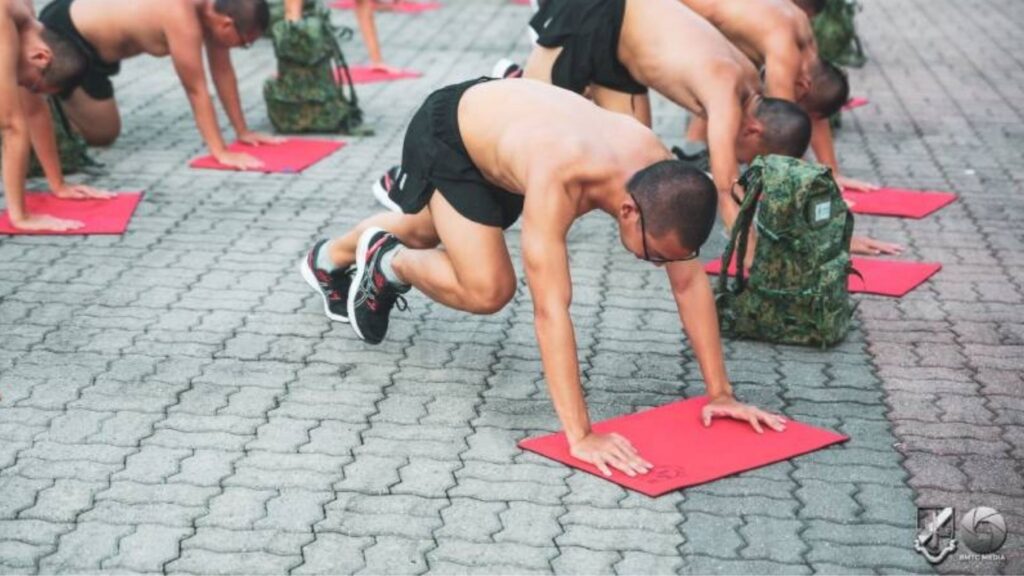Enlisting in National Service (NS) is a major milestone—not just for Singaporean men, but increasingly for women stepping up to serve too. Whether you’re a new recruit just starting Basic Military Training (BMT) or a regular pushing through routine drills, the physical demands of military life are no joke. From long route marches to strength-based training, NS can be tough on your body, especially if you’re not prepared.
With high-impact training, heavy gear, and unfamiliar drills, it’s no surprise that injuries are a common rite of passage. But here’s the good news: most of them can be prevented—if you know what to look out for.
In this blog, our physiotherapists share practical tips on how to avoid the most common BMT-related injuries—and what to do if you’re already in pain.
Why Are BMT Injury Rates So High?
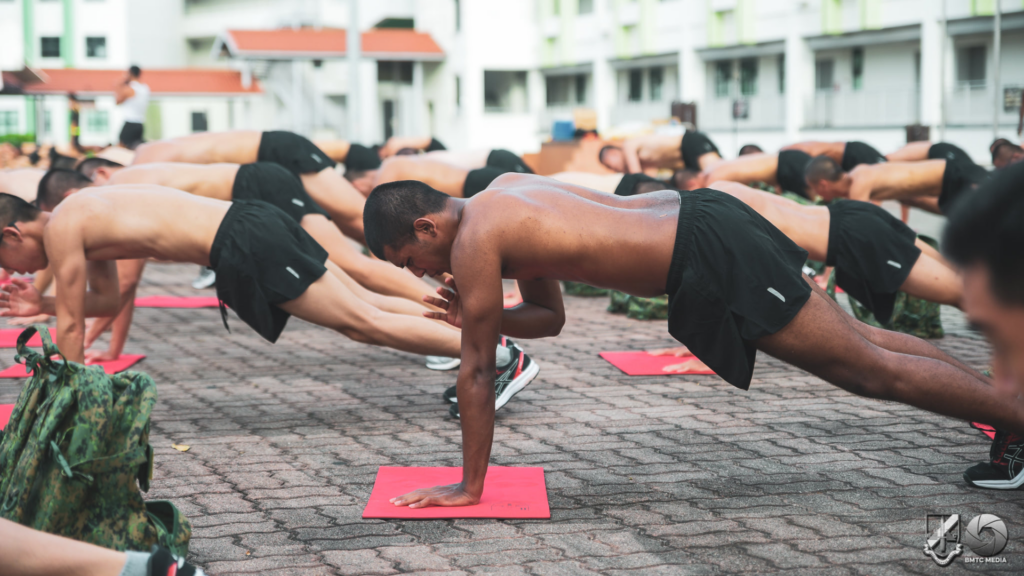
- Sudden spike in physical activity
Many recruits go from a low-activity lifestyle to full-day training almost overnight. Hence, their bodies may not have had enough time to adapt to the physical demands, making them more prone to injuries like muscle strains or joint pain. - Lack of proper form or training knowledge
Not everyone knows how to move safely under fatigue or when carrying heavy loads. Hence, poor form during push-ups, lifting, or running can lead to overuse injuries and preventable strain on the joints. - Environmental factor
Uneven terrain, heavy field packs, and boots that don’t fit well can throw a person off balance and increase the risk of falls or sprains. Hence, recruits often develop issues like ankle sprains, back pain, or shin splints during field exercises or route marches. - Underreporting of pain
Some recruits choose to endure the pain and push through, often out of fear of being judged or falling behind in training. As a result, minor injuries are left untreated, which can lead to worsening symptoms, longer recovery periods, or even chronic conditions.
Common BMT Injuries by Training Type and How to Prevent Them
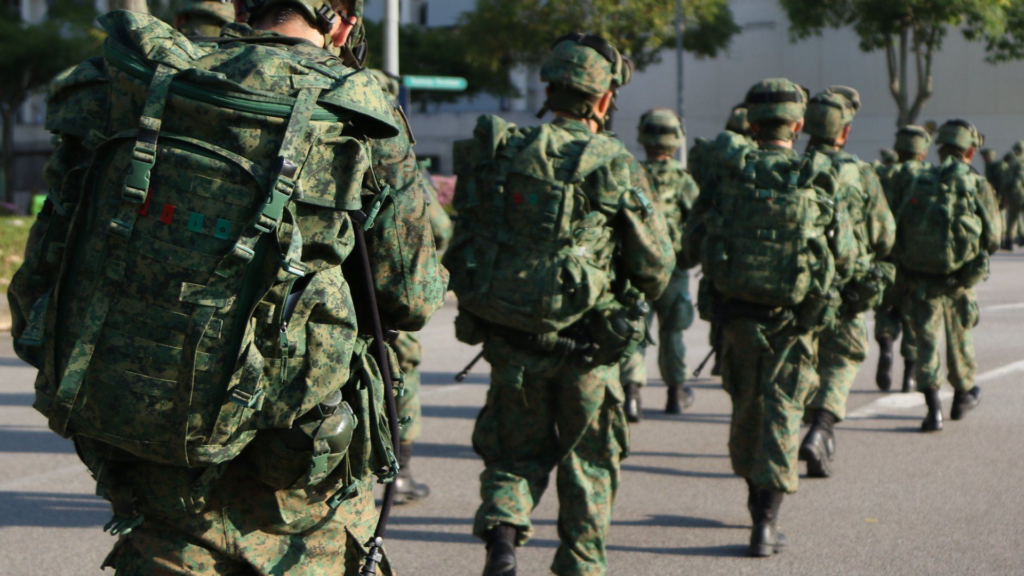
Route March
Route march is one of the most physically demanding components of BMT, involving long distances while carrying heavy gear such as field packs and rifles. This activity places significant stress on the shoulders and lower back, and if posture or load distribution is incorrect, recruits may experience shoulder strain, lower back pain, or even spinal disc injuries. These injuries can accumulate over time, especially if the march is performed without proper preparation or awareness of body mechanics.
Prevention Tips:
- Sling your rifle properly so the weight is distributed across your back, not just your shoulder.
- Tighten your field pack straps and fasten the chest clip. Use shoulder paddings to distribute the load evenly.
- Pack smart, distribute weight and avoid carrying unnecessary items.
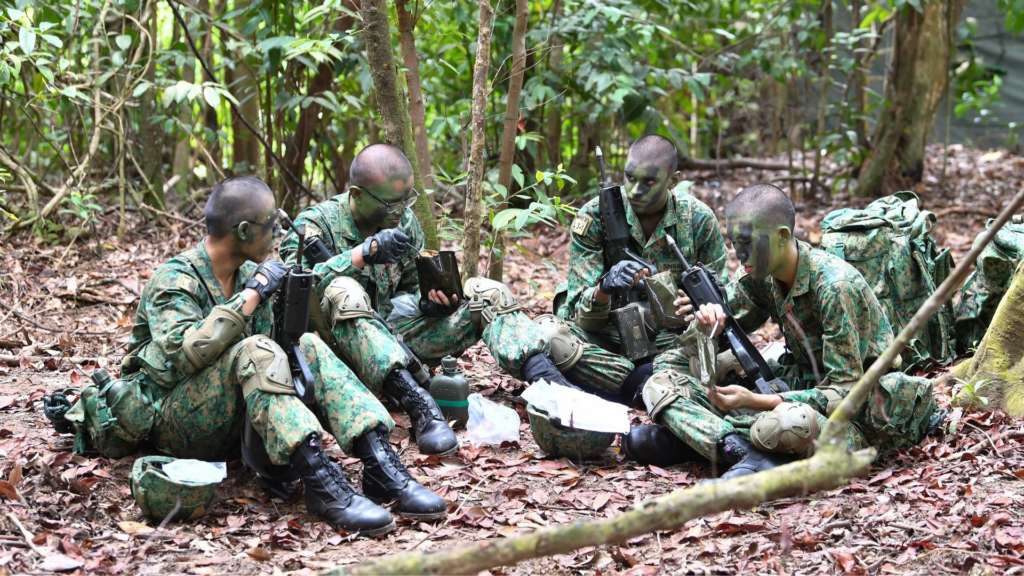
Field Camp
Field Camp exposes recruits to challenging outdoor environments, including uneven terrain, soft ground, and unpredictable weather. These conditions can easily lead to ankle sprains, particularly during dynamic movements or if one loses his footing. Recruits with flat feet may also experience increased foot fatigue or discomfort due to poor shock absorption and stability, especially during prolonged standing or marching.
Prevention Tips:
- Be alert, avoid stepping into holes or unstable ground.
- Ensure boots fit well: leave a one-finger space at the toe and lace up snugly to avoid excessive foot rolling.
- Improve ankle stability with balance and calf exercises during rest days.
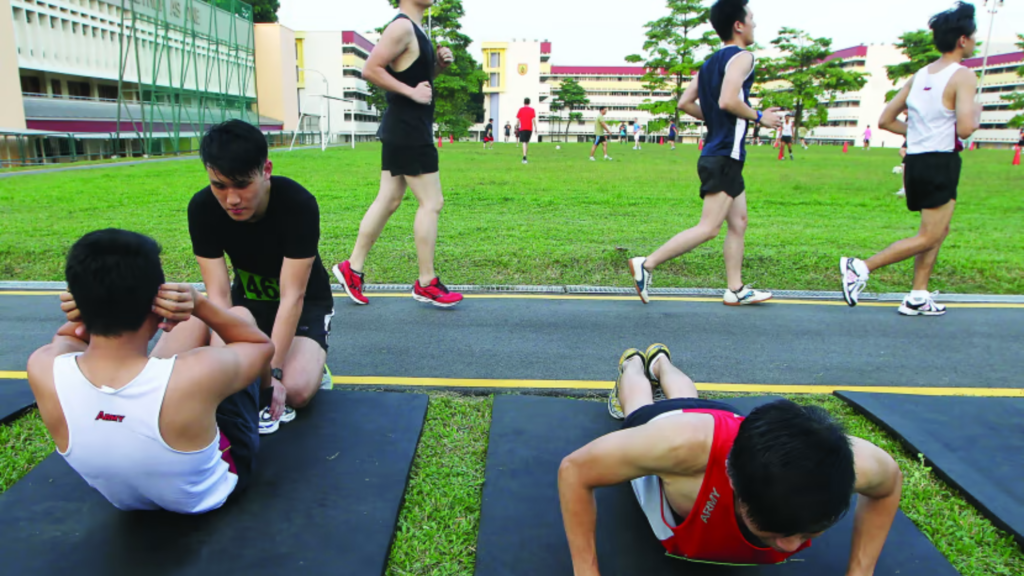
IPPT (Individual Physical Proficiency Test)
The IPPT is a core assessment in NS and often a source of stress for recruits. Activities like running and push-ups, if done with poor form or under fatigue, can lead to shin splints and wrist strains. Recruits with flat feet are especially vulnerable to impact-related injuries when running on hard surfaces, and improper push-up technique can strain the wrists and shoulders.
Prevention Tips:
- Use insoles if you have flat feet to reduce impact during running.
- Practice good push-up form: wrists under shoulders, elbows tucked, no sagging of the lower back.
- Warm up properly before your test to prepare your muscles.
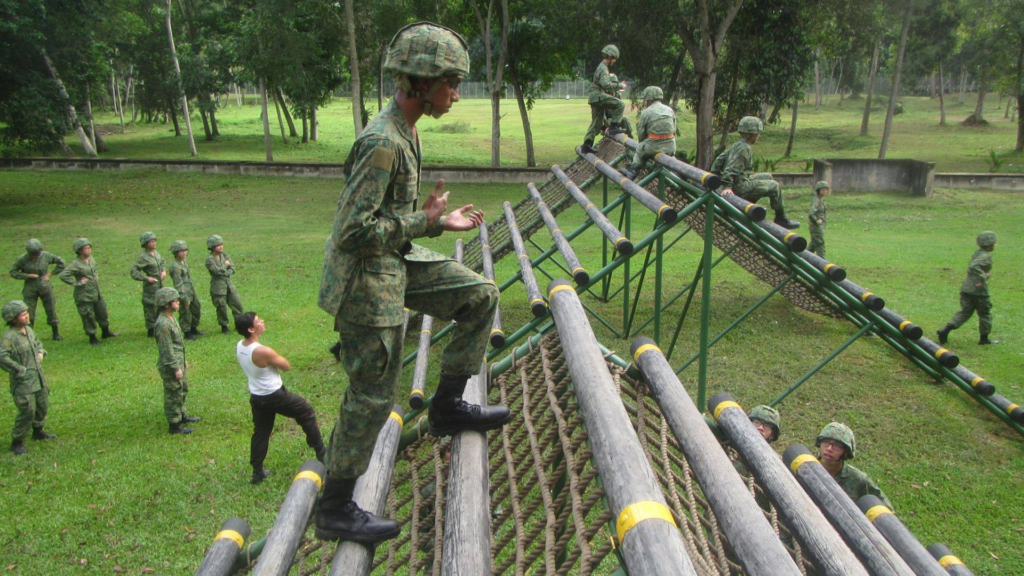
Standard Obstacle Course (SOC)
SOC combines upper and lower body challenges with varied landing surfaces. Falls, missteps, or poor landing form can lead to ankle or shoulder injuries.
Prevention Tips:
- Pay close attention to instructor demos.
- Practice each station slowly and safely first.
- Land softly—bend your knees and absorb the shock.
What Should I Do If I’m Already Injured?
Don’t ignore the pain! Here’s what to do:
- Inform your commander or MO—early intervention prevents worsening.
- Follow R.I.C.E. (Rest, Ice, Compression, Elevation) for sprains and strains.
- See a physiotherapist for proper rehab and a structured recovery plan.
- Avoid pushing through pain—it’s not a sign of weakness, it’s smart recovery.
How to Stay Injury-Free During BMT?
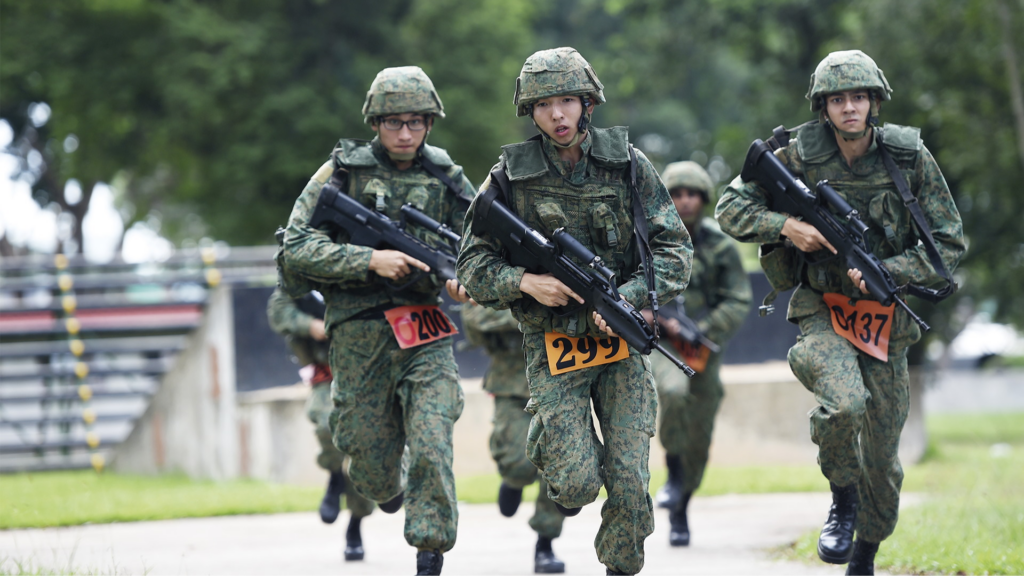
Basic Military Training (BMT) is tough—physically and mentally—but injuries don’t have to be part of the experience. With the right knowledge, good form, and consistent care, you can train hard without compromising your health. Staying injury-free helps you perform at your best, avoid unnecessary medical leave, and stay on track for future postings.
Here are 5 practical tips to help you prepare for and survive BMT injury-free:
1. Start Moving Before Enlistment
Don’t wait until day one of BMT to get active. Start building your stamina and strength at least 4–6 weeks before enlistment with light runs, bodyweight exercises (push-ups, sit-ups), and mobility work.
2. Strengthen Key Muscle Groups
Focus on your core, legs, and shoulders—these areas take a beating during route marches, IPPT, and field camp. Try squats, planks, lunges, and resistance band exercises.
3. Stretch Like It Matters (Because It Does!)
Get into the habit of stretching before and after exercise. Dynamic stretches before, static stretches after. This helps with muscle recovery and reduces tightness, especially in the back and hamstrings.
4. Choose the Right Footwear & Break It In
Foot pain, blisters, and ankle sprains often start with poor footwear. Break in your boots early if you get them ahead of time, and consider supportive insoles if you have flat feet.
5. Don’t Ignore Pain—Speak Up Early
“Tahan” culture won’t help you heal. If something hurts, speak to your commander or the Medical Officer. Early physio or podiatry intervention can prevent a small issue from becoming a serious one.
Why Choose Physio & Sole Clinic?
At Physio & Sole Clinic, we’ve helped countless NSFs and regulars recover from injuries and return to training stronger and more confident. Our physiotherapists understand the unique physical demands of National Service and offer personalised rehabilitation plans tailored to BMT-specific injuries. We provide comprehensive care—including gait analysis, strength assessments, manual therapy, and preventive strategies—to support long-term joint health and injury prevention throughout your NS journey.
Ready to train pain-free? Book an appointment today!
Don’t let injuries hold you back during BMT—get the support you need to move better, recover faster, and serve stronger. Book your session with us here!


